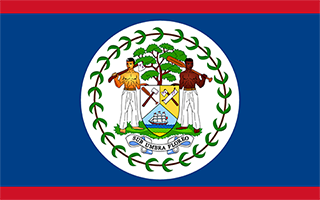Facts and Data
Webpages:
Official Unesco Page
Protectedplanet.net
Basis Data:
Unesco World heritage since: 1996
Size of heritage: 96,300 ha
Coordinates:
Longitude: -86,942°
Latitude: 16,750°
Summary
The coastal area of Belize is an outstanding natural system consisting of the largest barrier reef in the northern hemisphere, offshore atolls, several hundred sand cays, mangrove forests, coastal lagoons and estuaries. The system’s seven sites illustrate the evolutionary history of reef development and are a significant habitat for threatened species, including marine turtles, manatees and the American marine crocodile.
Location on Map
Show bigger map on Openstreetmap
The Belize Barrier Reef Reserve System
The Belize Barrier Reef Reserve System is a UNESCO World Heritage site located off the coast of Belize. It is comprised of seven protected areas, spanning three districts: Belize District, Stann Creek District, and Toledo District. This magnificent reef system is the largest in the northern hemisphere and is considered one of the most diverse ecosystems on the planet.
History
The history of the Belize Barrier Reef Reserve System dates back thousands of years. The ancient Maya civilization, which thrived in the region, relied on the reef for sustenance and trade. They recognized the importance of preserving this natural wonder and implemented sustainable fishing practices to ensure its longevity.
In more recent history, the Belize Barrier Reef Reserve System was designated as a UNESCO World Heritage site in 1996. This recognition was a testament to its outstanding universal value and the need for its protection. The Belizean government, along with local communities and conservation organizations, have since worked tirelessly to safeguard this precious ecosystem.
Current State
The Belize Barrier Reef Reserve System faces numerous challenges in the present day. Climate change, pollution, overfishing, and coastal development pose significant threats to its delicate balance. Rising sea temperatures have led to coral bleaching events, causing the loss of vibrant coral colonies and disrupting the entire ecosystem.
Efforts are being made to mitigate these threats and preserve the Belize Barrier Reef Reserve System. The government of Belize has implemented strict regulations to control fishing practices and limit coastal development. Marine protected areas have been established within the reserve system, providing a safe haven for marine life to thrive.
Collaboration between the government, local communities, and conservation organizations is crucial in ensuring the long-term survival of the Belize Barrier Reef Reserve System. Education and awareness programs are being conducted to promote sustainable tourism and responsible practices among visitors.
Despite the challenges it faces, the Belize Barrier Reef Reserve System remains a breathtaking natural wonder. Its crystal-clear waters are home to over 500 species of fish, 65 species of coral, and numerous other marine creatures. It serves as a vital nursery for endangered species such as sea turtles and manatees.
Visitors to the Belize Barrier Reef Reserve System can explore its wonders through snorkeling, diving, and boat tours. These activities provide an opportunity to witness the incredible biodiversity and experience the awe-inspiring beauty of this UNESCO World Heritage site.
In conclusion, the Belize Barrier Reef Reserve System is a globally significant ecosystem that deserves our utmost protection. Its rich history, diverse marine life, and stunning beauty make it a treasure worth preserving for future generations. Through sustainable practices and collective efforts, we can ensure that this natural wonder continues to thrive for years to come.
